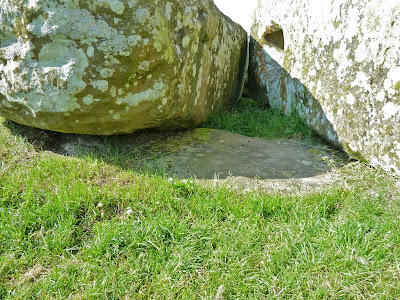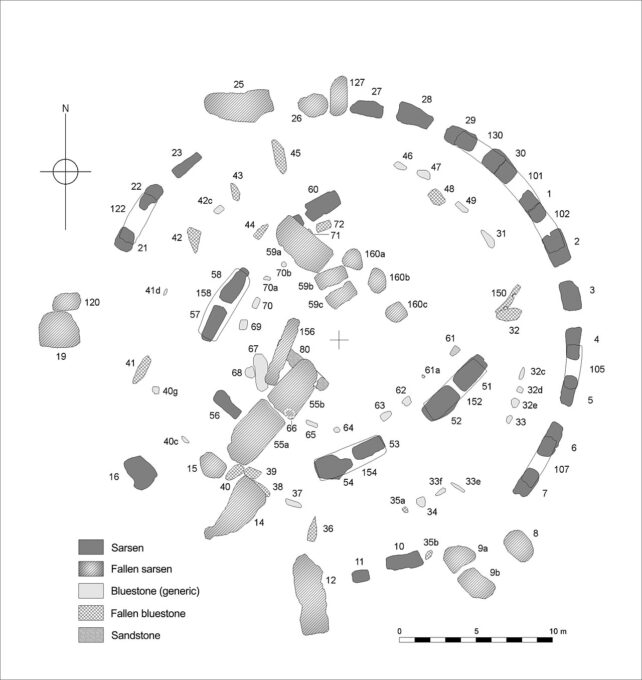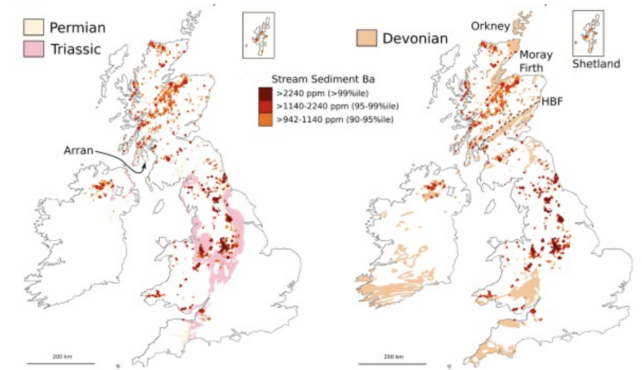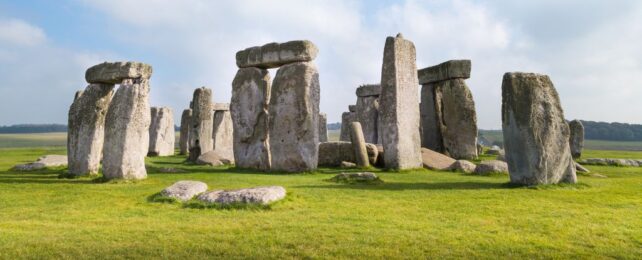Among the many megaliths of Stonehenge, one large slab stands out… or, more accurately, it lies down.
The Altar Stone, also known as stone number 80, is a 'recumbent' slab of stone in the inner circle of the famous Neolithic monument that would have once stood 4.9 meters (just over 16 feet) tall.
In a fall from grace, the purplish-green sandstone lies sunk into the ground, smothered by two blue igneous rocks.
Its origin is now proving to be something of a mystery.

In the inner ring of Stonehenge, 'bluestones' are famous igneous rocks thought to have come from the Mynydd Preseli area in Wales, 225 kilometers (140 miles) west.
Their arrival in the south of England is considered one of the longest construction transport distances for any ancient monument in the world – and that's part of what makes Stonehenge so impressive.
For almost a century, the origin of stone 80 was 'lumped in' with its bluestone neighbors. As it turns out, that assumption was wrong.
A new study of the geochemistry and mineralogy of the Old Red Sandstone foundation in West Wales – close to where the majority of the bluestones have been sourced – reveals a clear mismatch.
"One of the key characteristics of the Altar Stone is its unusually high barium content," explains the international team of researchers responsible for the study.
Of all 58 samples taken from the Old Red Sandstone (ORS) in West Wales, however, only four had barium levels near the lower range of the Altar Stone's composition. Despite their higher barium levels, the mineralogy of the four stones from this Welsh region didn't match the fine-grained nature of the Altar Stone.
"It now seems ever more likely that the Altar Stone was not derived from the ORS of the Anglo-Welsh Basin, and therefore it is time to broaden our horizons, both geographically and stratigraphically into northern Britain and also to consider continental sandstones of a younger age," write the authors of the study, which was led by the earth scientist Richard Bevins from Aberystwyth University in the UK.
"We therefore propose that the Altar Stone should be 'de-classified' as a bluestone, breaking a link to the essentially Mynydd Preseli-derived bluestones."

Much of the sediment in western Wales derives from Devonian rock that is around 400 million years old. It matches up well with Stonehenge's bluestones, but this substrate does not have enough barium to account for the Altar Stone's composition.
As a result, Bevins and his colleagues suggest that a hunt for the Altar Stone's origins should begin in younger rock formations, like those laid down in the Permian or Triassic around 200 to 300 million years ago.
For instance, there is known to be elevated barium in northern Ireland, as well as northeast Wales, and parts of northwest England.
Several of these regions also host Neolithic monuments made of sandstone, the authors of the study note.

Even rock as far north as Scotland is worth investigating, as this region's sandstone formations are high in barium and are of non-marine origin, which both match the Altar Stone.
Imagining how such a huge slab made it all the way from the icy north to the green south would be a whole other mystery to solve.
"This Wales source for the Altar Stone has remained unchallenged for almost a century," write Bevins and colleagues.
That time has now come to an end.
The study was published in the Journal of Archaeological Science: Reports.
